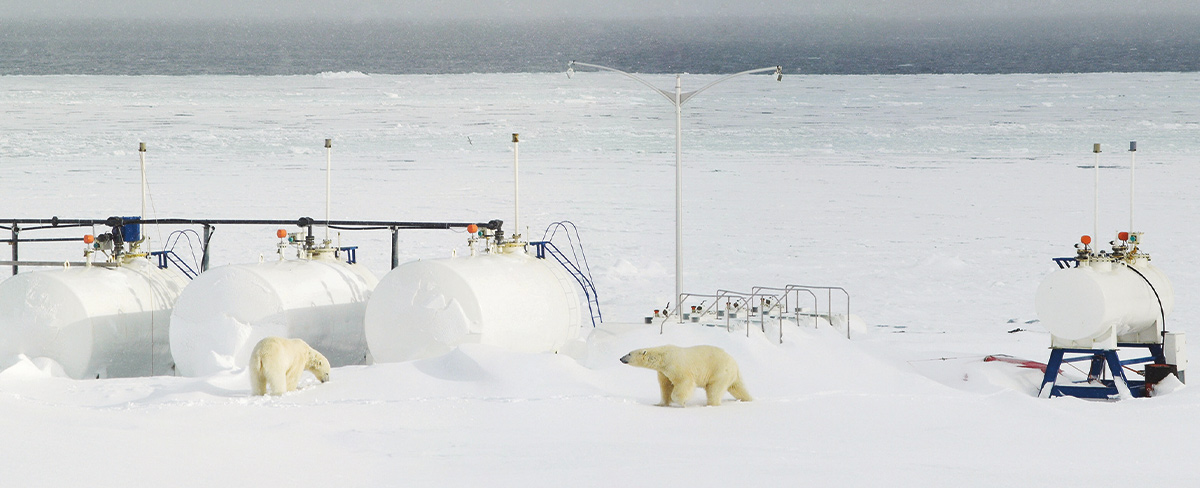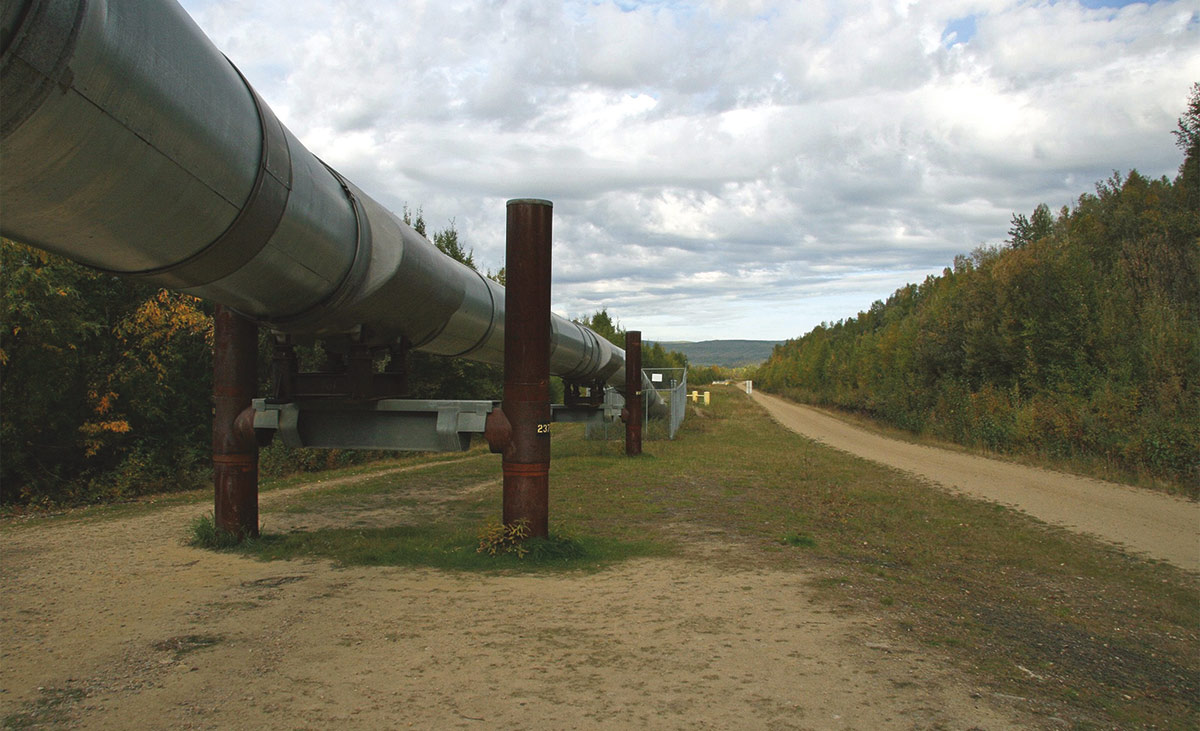TRUApp Energy
adami, an oil field about 25 miles east of Prudhoe Bay, was idle for five years in the early 2000s until Savant Alaska, in partnership with a wholly owned subsidiary of Arctic Slope Regional Corporation, revived it. The producer took over from BP Exploration Alaska in 2011 and embarked on an effort to find operational efficiencies.
Although relatively young as Alaska oil fields go, Badami’s operations had accumulated a crust of suboptimal solutions. Badami utilized more than sixty different technologies to support the management and execution of field operations, mainly enterprise-grade systems that were immensely powerful at the office in Anchorage and at the corporate level. However, the systems required extensive and ongoing training for use in the field and were often considered too complex and unwieldy for day-to-day use.
Field workers improvised more than 1,000 workarounds, commonly referred to as “shadow systems and tools.” Unseen by central IT departments, these field solutions included disconnected spreadsheets, databases, shared drives, binders, ad-hoc reports, and other hacks to manage day-to-day operations.
To untangle the Gordian knot of complexity, Savant Alaska partnered with Anchorage-based managed services provider and tech developer Tex R Us. The company has a portfolio of clients ranging from ACE Air Cargo and Cornerstone General Contractors to oil and gas companies such as Little Red Services, BlueCrest Energy, and Caelus Energy Alaska.
The collaboration between Savant and Tex R Us led to the formation of a sister company, TRUApp Energy, and its eponymous software application that supports oil and gas producers in their ongoing efforts to make energy secure, abundant, and affordable.
TRUApp Energy provides department leaders with the data and information they need to plan, prioritize, analyze, and distribute work. The developers call this the “orchestration layer,” which integrates with the app’s “enablement layer” to support the execution of work. Enablement also ensures that department specialists have the documentation, training, and materials they need at the point of performance. Users have a customizable dashboard to review tasks, work orders, materials, safety alerts, and other critical information.
“It provides the organizational capability for hundreds or thousands of field personnel, across dozens of departments and fields, and tens of thousands of tasks, to use one system to digitally document and carry out the tasks assigned to their specific role,” says D’Iorio.
Data-rich technologies have always assisted with capital-intensive oil and gas exploration. However, in the early days of TRUApp Energy’s development, Savant and Tex R Us decided to focus on creating a solution that increased efficiencies in above-ground operations. Developers based this decision on the discovery that surface technologies had been lagging subsurface technologies for decades.
“The labor costs associated with surface operations presented an untapped opportunity, as the field makes up a significant percentage of an oil and gas producer’s ongoing operating costs,” says D’Iorio.
TRUApp Energy

“None of these enterprise systems spoke with one another out of the box,” says D’Iorio. “As a result, they required another layer of peripheral technology to cobble this data and communication capability together.”
This discovery reinforced TRUApp Energy’s initial challenge: creating a “less is more” approach to the number of technologies required for use and management by field personnel.
Over the next two years, developers continued to analyze, restructure, optimize, and digitally house workflows, resulting in an integrated oil and gas surface operational model. This centralized platform fundamentally altered the work dynamics, cost structure, safety, and profitability of Savant’s operations at the Badami field.
D’Iorio says TRUApp Energy’s largest client is Eni, the Italian supermajor that operates multiple fields on the Slope. Working with that client for more than four years has resulted in a reduction of operating costs across departments ranging from maintenance and asset integrity, materials management, and health, safety and environmental management to production, camp maintenance, and training and procedures management.
“With hundreds of TRUApp users in the field for this one client, the platform actively manages tens of thousands of work orders, tasks, pieces of equipment, and materials each year across multiple assets and locations,” D’Iorio says. “In doing so, we’ve become a valued partner and cornerstone of their approach to field operations. We’ve proven our ability to support them on the Slope.”
For producers with complex facilities, the breadth and depth of orchestration and enablement requirements demand TRUApp Energy’s integrated digital workflows and automation, D’Iorio says. Past reliance on paper, Post-it notes, filing cabinets, and binders can’t meet demands for safety, compliance, regulation, and cost control. Likewise, D’Iorio finds the widespread use of disconnected shadow systems, which require constant manual and redundant data entry to stay up to date, to be inefficient, costly, and risky. In their place, D’Iorio says efficiencies across field operations by standardizing the capture and organization of real-time and historical data unlock TRUApp Energy’s ability to support executive decision-making.

TRUApp Energy
Larry Johnson, maintenance team lead for Savant Alaska, says TRUApp Energy has become a powerful tool for field operators. He says turbine uptime rates increased from 62 percent to about 98 percent. Likewise, compressors and other large pieces of equipment have increased uptime rates to almost 100 percent because the app allows crews to keep track of preventative maintenance. Before TRUApp Energy, failure rates on compressors were in the 50 percent to 60 percent range.
“Our uptime rate is being noted by other companies, even bigger companies,” says Johnson. “Using the app keeps us on schedule, tracks our hours of use, and tells us when it’s time to set up the annuals and to change the oils or filters.”
D’Iorio says producers have a fiduciary responsibility to shareholders and to local communities to operate as efficiently and safely as possible from an environmental perspective. TRUApp Energy is well-versed in supporting strict environmental protection regulations. By using TRUApp Energy, he says producers are no longer at risk of losing crucial operational data that was once siloed in shadow systems or on paper, as institutional knowledge of facilities, equipment, and specialists is maintained and organized in a single, secure location.
“When you look at the execution and management of work through this lens of integration, standardization, and control,” says D’Iorio, “the far-ranging implications upon safety, personnel, compliance, and profitability become clear.”
From an evolutionary perspective, TRUApp Energy plans to continue working with North Slope producers to unlock new operational efficiencies. Overall, the goal is to become the go-to field co-operating platform across a portfolio of field assets from the North Slope and beyond, including expansion into other energy types and the industrial sector.
“It’s all very introductory at this point,” says D’Iorio. “But what is clear in these talks are the things that won’t change across energy types and other industries. In some capacity, skilled personnel—and their need to leverage technology specifically designed to enhance their ability to execute upon and manage their work in the field—will be required regardless of which field they work in.” D’Iorio adds that the collective intelligence of field specialists should be cultivated organizationally to make energy more secure and affordable, so a single platform makes sense versus ungovernable, disconnected shadow systems.
D’Iorio says the problems TRUApp Energy solves are embedded in a broad array of industries. As TRUApp Energy grows and changes, developers will adapt its design for other energy sources as well. At its base, TRUApp Energy simplifies and automates operational complexity in asset-intensive industrial operations. In this regard, D’Iorio considers upstream oil and gas as the first phase of TRUApp Energy’s product roadmap.
With twenty-five years of involvement in the oil and gas industry within Alaska, D’Iorio believes TRUApp Energy and Tex R Us have gained a depth of understanding of the energy and technology landscape. While its flagship software has already proven effective for major clients, the team feels there is additional work that could lead to TRUApp Energy becoming the standard for producers to safely manage field operations on the Slope and beyond for many years to come.